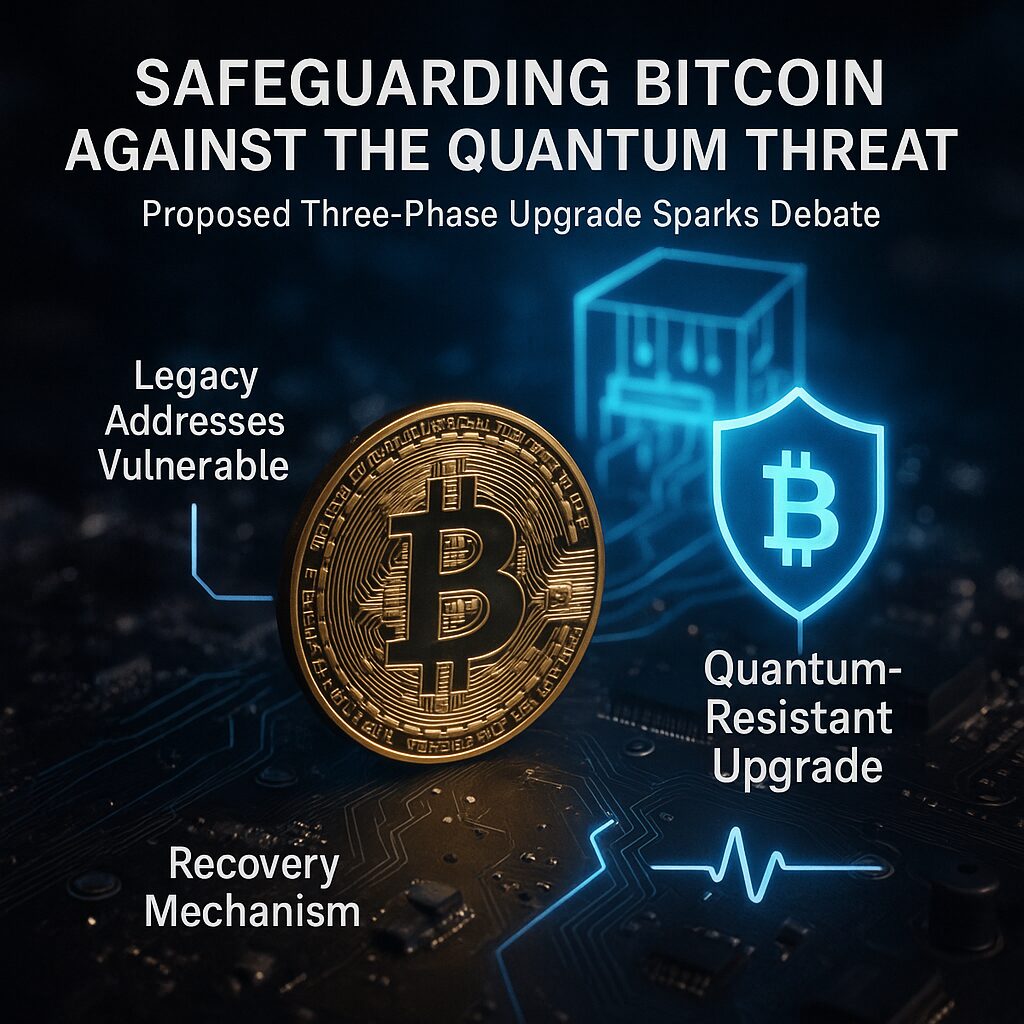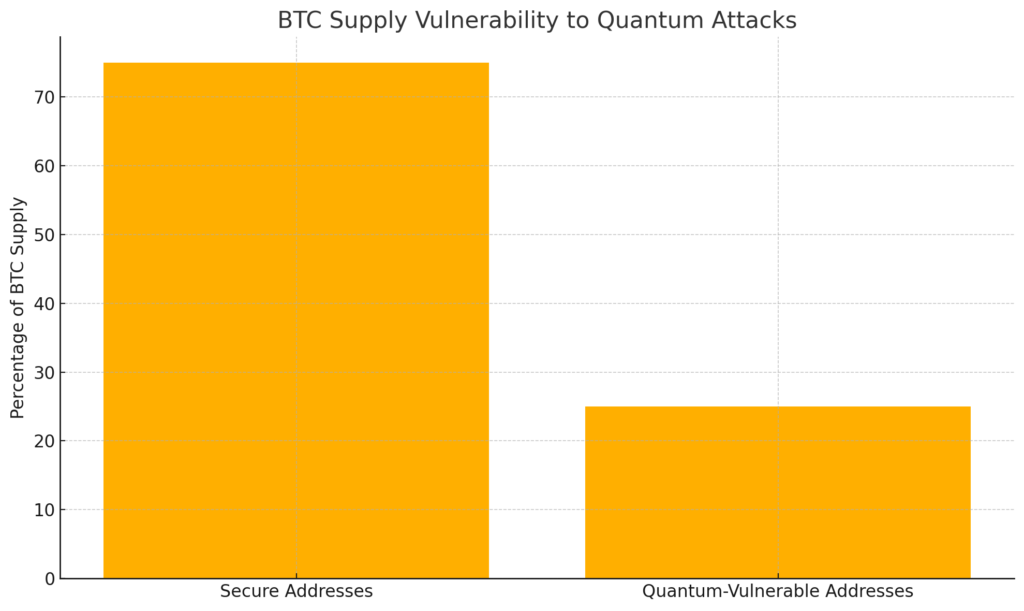
Main Points:
- Legacy Bitcoin addresses with exposed public keys hold roughly 25% of total supply (~4.9 M BTC, ≈ $593 billion), making them vulnerable to quantum attacks.
- Developers, led by Jameson Lopp, propose a three‑phase BIP: (A) nudge users to quantum‑resistant addresses, (B) disable legacy outputs, and (C) offer a recovery mechanism.
- If unaddressed, high‑performance quantum computers could break ECDSA/Schnorr by as early as 2027, threatening dormant wallets and network security.
- Critics warn the upgrade effectively “freezes” coins, including those tied to Satoshi Nakamoto, provoking debate on whether it’s protection or de facto confiscation.
- Broader crypto ecosystem is examining post‑quantum standards (e.g., NIST’s PQC algorithms) to ensure all chains and wallets transition smoothly.
The Quantum Threat to Bitcoin
Vulnerable Supply
Up to 25% of Bitcoin’s total supply—approximately 4.9 million BTC, currently valued at around $593 billion—resides in legacy addresses whose public keys have already been revealed. Attackers with a sufficiently powerful quantum computer could compute the corresponding private keys, enabling a stealthy “covert bleed” of funds without immediate detection.
Timeline of Risk
While no existing quantum computer can yet crack ECDSA or Schnorr, leading researchers warn that machines capable of breaking Bitcoin’s encryption could emerge as early as 2027. The threat is not theoretical: in May 2025, a study suggested that breaking RSA‑2048 (similar hardness to Bitcoin’s curves) might require one‑twentieth the resources previously estimated.
Three‑Phase Migration Plan

The proposed BIP outlines a staged approach to migrate users toward quantum‑secure formats without a sudden network shock :
Phase A: Incentivize Migration
Action: Ban new transactions sending funds to legacy ECDSA/Schnorr addresses at the consensus layer, encouraging use of quantum‑resistant address types (e.g., P2QRH).
Timing: Begins three years after BIP activation.
Goal: Steer the ecosystem toward safer cryptography.
Phase B: Disable Legacy Outputs
Action: After a further two years, invalidate all legacy signatures on‑chain, freezing coins in unupdated addresses.
Impact: Any funds remaining in vulnerable addresses become permanently unspendable—essentially “frozen” until upgraded.
Phase C (Optional): Recovery Path
Action: Introduce mechanisms (such as zero‑knowledge proofs of seed possession) to recover funds stuck in frozen wallets.
Notes: This phase may require an additional BIP and community consensus.
Impact on Dormant and Satoshi‑Linked Coins
Critics highlight that this plan would involuntarily freeze assets—particularly those in long‑inactive addresses, including roughly 1.1 million BTC believed to be Satoshi’s early holdings. Some community members view this as tantamount to confiscation, raising ethical and governance concerns. Proponents counter that “doing nothing” leaves these same coins at risk of theft by quantum‑equipped adversaries.
Developer Responses and Community Debate
Jameson Lopp argues that without preemptive action, dormant wallets face the same quantum risk as active ones—and an attacker needs only to wait for quantum capability to emerge. Nevertheless, detractors warn that hard‑coding expiration deadlines into Bitcoin amounts to unprecedented network coercion. The community is now weighing the trade‑off between proactive security and the principle of immutable ownership.
Emerging Quantum‑Resistant Solutions
Beyond Bitcoin’s internal upgrade, the wider crypto industry is advancing post‑quantum cryptography:
- NIST PQC Standardization: The U.S. National Institute of Standards and Technology (NIST) is finalizing quantum‑safe algorithms for global adoption, with candidates like CRYSTALS-Kyber for key exchange and CRYSTALS-Dilithium for digital signatures.
- Other Chains: Projects like Ethereum and various Layer 2 networks are conducting tests on hybrid signature schemes combining ECDSA with Lamport signatures.
- Wallet Integrations: Hardware wallet vendors (e.g., Ledger, Trezor) are prototyping firmware updates to support post‑quantum key types, ensuring user devices aren’t a security bottleneck.
Conclusion: Balancing Security and Sovereignty
Bitcoin stands at a crossroads. The threat of quantum computing challenges the core tenets of decentralized trust: security and immutability. The three‑phase upgrade proposal offers a clear roadmap but forces a difficult community decision—whether to risk future quantum theft or accept the temporary “freezing” of legacy funds. As the world races toward Q‑Day, Bitcoin must evolve. The coming months will determine not only the network’s cryptographic future but also how decentralization adapts to existential technological shifts.

